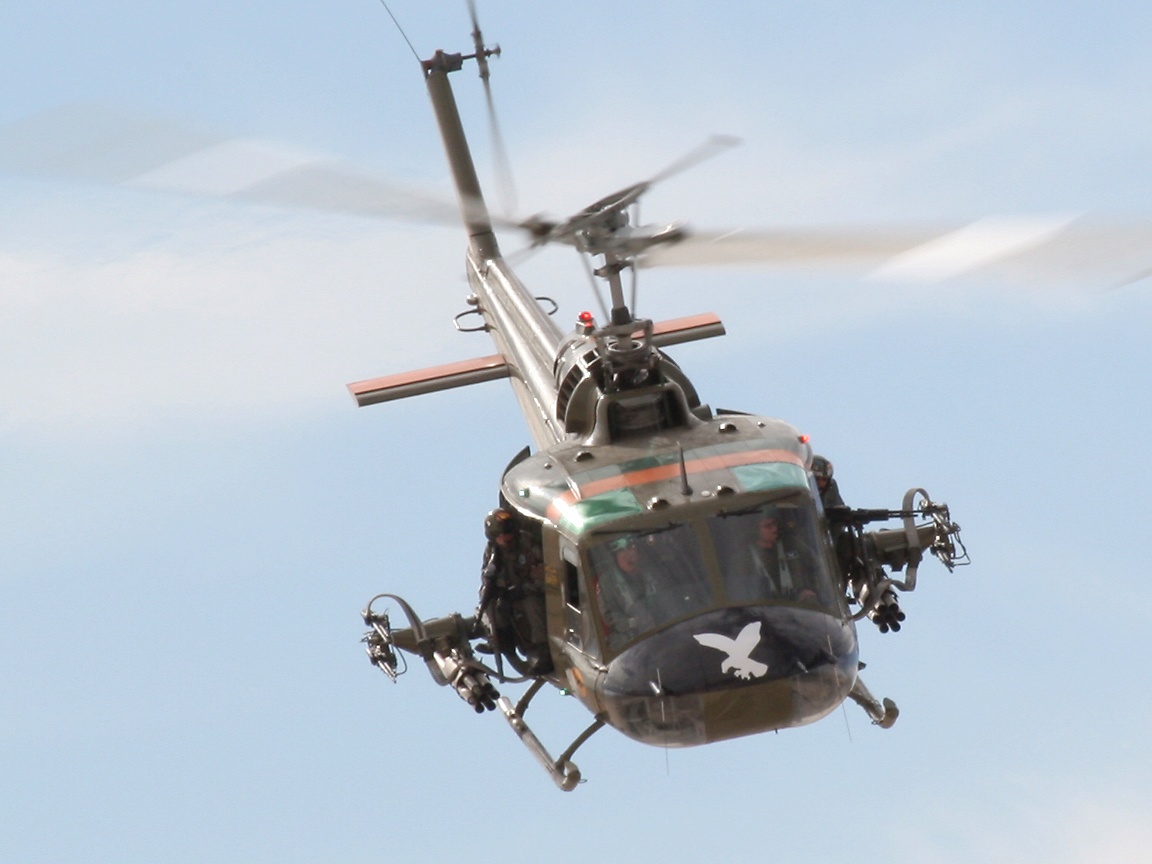

The role of Huey gunships was also expanded as they formed one-half of "hunter-killer" teams when paired with lighter helicopter platforms such as Hughes OH-6 and Bell OH-58 helicopters. As such, the importance of suppression was highly valued by warplanners and infantry alike. Helicopters had access to areas well-beyond front lines and this meant that they were usually operating in zones while taking fire.

UH-1 gunships excelled in their given role for the firepower they carried into battle was a much-needed quality of Army doctrine of the period. Night operations could be aided by trainable searchlights at the side doors as well and required additional crew to function (sighting devices were also part of this configuration). A typical crew, therefore, numbered four personnel to man the various onboard systems and weapons. Beyond these fixed implements were M60 General Purpose Machine Guns (GPMGs) carried at each side door (or M134 trainable miniguns)), trainable and operated by dedicated gunners. At the nose was a powered turret fitting a 40mm M-5 automatic grenade launcher fed by a 107 round stock of projectiles.

Alternatively miniguns could take the place of the quad 0.40 caliber machine gun arrangement (as could a cannon pod as in the "XM-31" 20mm system) and various rocket launchers were fitted over or under the wing stubs (the former as in the "XM-6 Quad Mount" system). The most potent of these ("Cobra" form) carried wing stubs that mounted a quad 0.30 caliber machine gun array (two guns stacked at each end point) and a single pylon for a seven- or nineteen-shot 2.75" rocket pod for a total of fourteen rockets. The UH-1 gunship was a true weapons platform and showcased the versatility of the design as a whole.

Both UH-1B and UH-1C Huey production models were used in the gunship role during the war. The aircraft could expect to make speeds nearing 95 miles per hour which made them fast platforms quick to respond to changing situations and also keep up with the troop transports. Dedicated troop transports were known simply as "Slicks" and lacked wing stubs/rocket pods but could carry side door gunners for local area suppression of enemy elements.Ĭobras and Frogs/Hogs were powered by a Lycoming T53-L-11 turboshaft engine developing 1,100 horsepower while driving the two-bladed main rotor and two-bladed tail rotor. Eventually versions emerged that carried both guns and rocket pods.
Huey helicopter gunship series#
Army helicopter service prior to the arrival of the Bell AH-1 series mentioned prior. The use of the name "Cobra" in this instance was also the first of its kind in U.S. All-gun models were designated "Cobras" (or "Guns") while rocket-carrying forms were known as "Frogs" and "Hogs". The UH-1B became the first helicopter gunship to see operational service in number anywhere in the world. These gunships were, by and large, only interim measures until more dedicated attack platforms like the Bell AH-1 "Cobra" line came into being. Grenade launchers and autocannons, these fitted to turrets, and even missiles rounded out some of the weaponry tested on these vehicles. Transitions generally revolved around outfitting the existing airframes with wing stubs for rocket pods/tubes and gun pods while machine guns were added at door and window stations when possible. Army during the course of the war as dedicated gunships and this included the large tandem-rotor, medium-lift Boeing CH-47 "Chinook" transport as well as the smaller Sikorsky H-34 series. Various platforms were modified and tested by the U.S. In this arrangement, the transports could operate with Close Air Support (CAS) immediately on hand over areas where loitering by fixed-wing aircraft proved unrealistic. Another one of the system's primary roles became that of helicopter "gunship" as the base design was modified through an array of weapons to serve alongside transport versions and provide covering fire. It was excelled in the "air cavalry" role and was also pressed in to troop ferrying into and out of contested zones while also providing critical to MEDEVAC operations. One of the symbols of the American involvement in the Vietnam War (1955-1975) became the ubiquitous Bell UH-1 "Huey" transport helicopter.


 0 kommentar(er)
0 kommentar(er)
